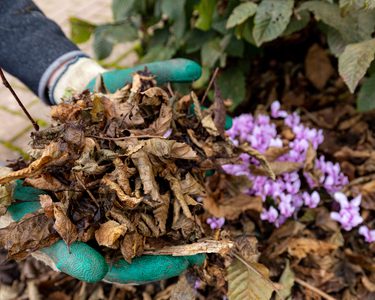Chris Collins on…leafmould

Here in London the colours of autumn are now properly underway as the trees get ready for their winter nap. The fresher mornings always feel welcome to me as I never tire of the seasonal changes. Nature always brings gifts and autumn offers this on a bigger scale - the gift of falling leaves.
Decaying leaves play a huge role in nature’s cycle by returning nutrients to the soil, keeping its structure in healthy condition and feeding its many occupants. As gardeners, we can replicate this amazing resource for our own growing conditions and create the magical material known as leafmould.
How to collect leaves
A simple composting bin, set aside for your leaves can easily be constructed from old pallets or four simple stakes wrapped in chicken wire. If space is short, bin liners punctured with air holes will also suffice. Alternatively, if you’re involved in a community garden, allotment, or volunteer at a park, think about setting up a communal leaf bin. It would cost next to nothing, and everybody benefits.
Look out for differing types of leaves as this will affect how long it takes for your leafmould to break down. Fine, small leaves like birch or apple will break down quicker than tough characters like the London plane tree. Leaves like the often benefit from shredding if you are lucky enough to have the right equipment.
How to speed up the process
Like normal composting there are some methods to speed up the process of turning leaves into this beautiful crumbly resource. In the past I’ve added grass clippings to my bins, turning the contents regularly, making sure they are kept moist. This results in the heating up of the leaf bin and a quicker rate of breakdown.
However, if that seems a bit time consuming don’t worry, nature will do the job for you, but you need to give it a couple of seasons before getting the best results. Don’t forget though to take the occasional peek at your leaf bin. It really is a world in itself. You’ll find lines of fungal mycelium, worms a plenty and if you’re lucky a curled-up family of slow worms.
How to use your leafmould
Leafmould, just like compost, serves a variety of purposes for the gardener. Mixed with sharp sand/grit, and sieved homemade compost it makes an excellent seed compost. Or, it can be added to your borders, veg plot or even mixed with seed compost and popped into your containers.
This mulch of leaves will bring massive benefits to your soil and its inhabitants - and best of all it’s free: a natural bonanza.